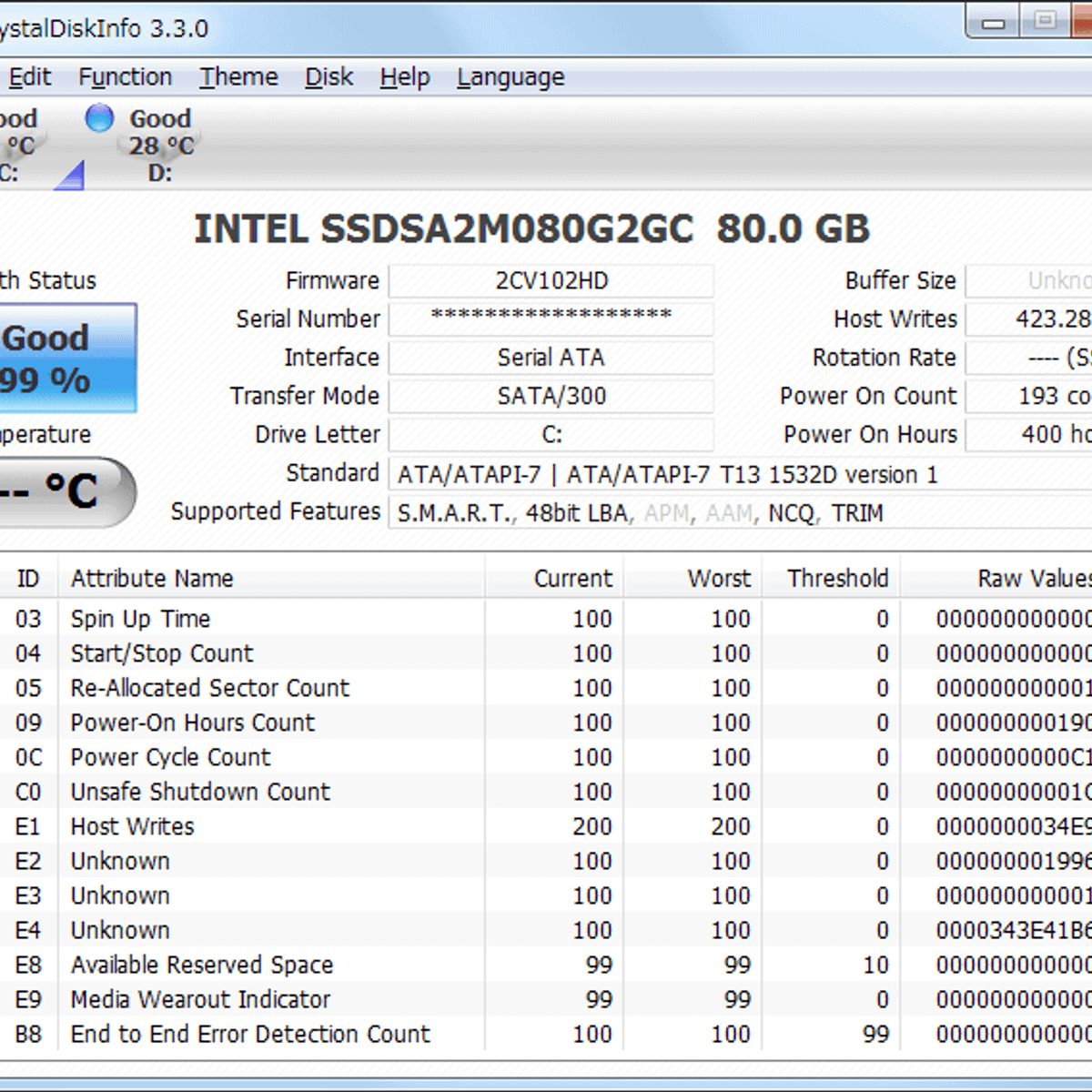Minecraft can run maxed out on either Mac OS or Windows. I know from forums here Borderlands 3 is a NO GO for Mac OS(poorly optimized), but runs fine in Windows. There are more games on Windows currently that do not have a Mac OS counterpart, such as: - Witcher 3, Overwatch, Apex Legends, Valve's older 32-bit games, and many many more. Apr 22, 2019 In this video, I rounded up a handful of my favorite SSD’s that I have been using over the past couple of months and wanted to show you what each.
Erasing a disk or volume permanently deletes all of its files. Before continuing, make sure that you have a backup of any files that you want to keep.
How to erase a disk
Proceed based on whether you're erasing your startup disk or some other disk. Your startup disk is the disk (volume) that your Mac started up from. By default it's the disk built into your Mac, named Macintosh HD. If you're selling, giving away, or trading in your Mac, you should erase your startup disk.
Erase a startup disk
- Start up from macOS Recovery.
- Select Disk Utility from the Utilities window in macOS Recovery. Then click Continue.
- Make sure that the sidebar in Disk Utility shows the name of your startup disk. The volume representing your startup disk is Macintosh HD, unless you renamed it. Don't see it?
- Look for a ”Data” volume with the same name, such as ”Macintosh HD - Data.” If you have such a volume, select it. Then choose Edit > Delete APFS Volume from the menu bar, or click the delete volume button (–) in the Disk Utility toolbar.
When you're asked to confirm, click the Delete button. Do not click Delete Volume Group. Do the same to delete other volumes you might have on your startup disk—except the volume named Macintosh HD. - After deleting any Data volumes, select Macintosh HD in the sidebar.
- Click the Erase button or tab, then complete these items:
- Name: Enter a name that you want the volume to have after you erase it, such as Macintosh HD.
- Format: Choose either APFS or Mac OS Extended (Journaled) to format as a Mac volume. Disk Utility shows the recommended Mac format by default.
- Click Erase to begin erasing. You might be prompted to enter your Apple ID.
- When done, quit Disk Utility to return to the Utilities window.
- If you want your Mac to be able to start up from this volume again, choose Reinstall macOS from the Utilities window, then follow the onscreen instructions to reinstall macOS on the volume. If you don't reinstall macOS, your Mac might start up to a flashing question mark (?).
Erase some other disk
The steps above also work when erasing a storage device that you're not using as a startup disk. However, in that case it's not necessary to open Disk Utility from macOS Recovery: you can instead open it from the Utilities folder of your Applications folder. And you don't need to delete data volumes first: just select your disk in Disk Utility, then click Erase.
How to change the partition map (scheme) of a disk
Ssd Drives For Gaming
In some circumstances, you might need to change the partition map (scheme) while erasing. If you're following instructions that require choosing a scheme, the steps in Disk Utility differ from the steps above.
- After opening Disk Utility, choose View > Show All Devices from the menu bar.
- The sidebar now shows not just volumes, but also the disks (devices) that contain those volumes. In the following example, APPLE SSD is the disk, Container disk1 is a container on that disk, and Macintosh HD is a volume in that container. (Only APFS-formatted disks have containers.)
- Select the disk that you want to erase, such as Apple SSD.
- Check the information shown on the right side of the window to find out which partition map is currently in use:
- GUID Partition Map is appropriate for Mac disks.
- Master Boot Record is appropriate for external drives used with a PC or Boot Camp.
- If the partition map is not appropriate for the disk's intended use, click the Erase button or tab, then complete these items:
- Name: Enter a name that you want the disk to have after you erase it, such as Apple SSD.
- Format: To format as a Mac disk, choose either APFS or Mac OS Extended (Journaled). Disk Utility shows a compatible format by default.
- Scheme: Choose the appropriate partition map scheme.
- Click Erase to begin erasing. If you're erasing your startup disk, you might be prompted to enter your Apple ID.
- Quit Disk Utility when done.
- If you want your Mac to be able to start up from this disk, choose Reinstall macOS from the Utilities window, then follow the onscreen instructions to reinstall macOS on the disk.
Why erase a disk
You can erase a disk or volume at any time, including in circumstances such as these:
- You want to quickly and permanently erase all content from your Mac and restore it to factory settings, such as when you're selling, giving away, or trading in your Mac.
- You're changing the format of a disk, such as from a PC format (FAT, ExFAT, or NTFS) to a Mac format (APFS or Mac OS Extended).
- You received a message that your disk isn't readable by this computer.
- You're trying to resolve a disk issue that Disk Utility can't repair.
- The macOS installer doesn't see your disk or can't install on it. For example, the installer might say that your disk isn't formatted correctly, isn't using a GUID partition scheme, contains a newer version of the operating system, or can't be used to start up your computer.
- The macOS installer says that you may not install to this volume because it is part of an Apple RAID.

About APFS and Mac OS Extended
Disk Utility in macOS High Sierra or later can erase most disks and volumes for Mac using either the newer APFS (Apple File System) format or the older Mac OS Extended format, and it automatically chooses a compatible format for you.
Identify the current format
If you want to know which format is currently in use, use any of these methods:
- Select the volume in the Disk Utility sidebar, then check the information on the right. For more detail, choose File > Get Info from the Disk Utility menu bar.
- Open System Information and select Storage in the sidebar. The File System column on the right shows the format of each volume.
- Select the volume in the Finder, then choose File > Get Info from the menu bar. The Get Info window shows the Format of that volume.

Choose between APFS and Mac OS Extended
If you want to change the format, answer these questions:
Are you formatting the disk that came built into your Mac?
If the built-in disk came APFS-formatted, don't change it to Mac OS Extended.
Are you about to install macOS High Sierra or later on the disk?
If you need to erase your disk before installing High Sierra or later for the first time on that disk, choose Mac OS Extended (Journaled). During installation, the macOS installer decides whether to automatically convert to APFS—without erasing your files.
Are you preparing a Time Machine backup disk or bootable installer?
Choose Mac OS Extended (Journaled) for any disk that you plan to use with Time Machine or as a bootable installer.
Will you be using the disk with another Mac?
If the other Mac isn't using High Sierra or later, choose Mac OS Extended (Journaled). Earlier versions of macOS don't mount APFS-formatted volumes.
Disk Utility tries to detect the type of storage and show the appropriate format in the Format menu. If it can't, it chooses Mac OS Extended, which works with all versions of macOS.
If your disk doesn't appear in Disk Utility
If Disk Utility doesn't show a sidebar, choose View > Show Sidebar from the menu bar.
If Disk Utility shows the sidebar, but your disk doesn't appear within it, disconnect all nonessential devices from your Mac. If the disk is external, leave it connected, but make sure that it's turned on and connected directly to your Mac using a good cable. Then restart your Mac and try again. If your disk still doesn't appear, your disk or Mac might need service. Learn how to get your Mac ready for service.
Ssd For Gaming Computer
Learn more
Best Ssd Format For Mac Gaming Download
- If you can't start up from macOS Recovery, you can instead use a different startup disk, if you have one.